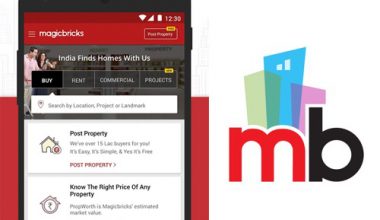Technology, people, data, and process together collaborate to allow mobility amongst enterprises and companies. Enterprise Mobility (Business Mobility), refers to the digitally-powered business model that incorporates web & mobile technology, applications, and digital devices like desktops, mobile phones/smartphones, tablets, etc. and uses Cloud technology for data access that facilitates an efficient, agile manner of data sharing and varied functionalities under seamless networking and environment. The remote workforce in an enterprise assuring greater productivity is an exemplary characteristic of enterprise mobility.
EMM (Enterprise Mobility Management) is the efficient & effective way of managing users’ connectivity with their corporate resources/data, by integrating users, web&mobile applications, and a content management system ensuring strong data security and networking in the process. For instance, the BYOD concept. Heard it before? In fact, as a business, you are already practicing it. Bring your own device (BYOD) is a good example of enterprise mobility. A good EMM solution (Enterprise mobility management solution) helps the user/employee for remote working, and access enterprise data/company data from anywhere virtually using a digital device.
Enterprise Mobility Strategy
EMS (Enterprise Mobility Strategy) means creating a roadmap for mobilizing your enterprise. You can understand it as a framework that includes technology (digital nowadays more prominent), your business/company, varied projects, a massive workforce as well as processes required, all under one roof! The crux is, that you need to see your requirements, and align your company’s goals with technologies and mobility assets that allow best practices and are most conducive to improving performances and productivity. Moreover, you need to be futuristic while creating this roadmap ensuring it has a good scope for future development, too.
Ideally, you should consult a good enterprise app development company that can guide you through the step-by-step process.

5-Steps to devise your Enterprise Mobility Strategy
If you are the CEO or CIO of your organization, you need to devise strategies that are conducive to your growth, leading to increased productivity and improved customer satisfaction. You should follow the given 5-steps for creating a perfect enterprise mobility strategy facilitating business growth:
Starting with the Basics
Dive deep into the motive first. Why do you want to bring mobility into your current business process? What is lacking and where’s the gap?IS technology below par, or, are employees and workforce not productive in their jobs? Think about the fundamentals and discover in what way implementing an enterprise mobility strategy can impact your business leading to increased revenues and growth. So, devise a strategy that will ensure creating newer business opportunities, enhanced customer satisfaction, and substantially increasing overall business performances! A perfect enterprise mobility management solution can make your strategy look smarter.
Plan for a Short-Term Strategy
Never plan for the long-term strategy. Think short-term first, and see its feasibility; your enterprise mobility strategy should address challenges that your organization is facing now. Also, you should discover opportunities by creating such strategies for at least one year or two years (short-term). The way mobility is transforming businesses the world over can give you sufficient insights. See how they are coping with the challenges and formulate plans/strategies for mobility in a way that suffices to deal with them idealistically. Thus, reviewing becomes possible in a short-term strategy; you can review yours every year and make deep analysis, and assessment of what is working for you and what to change in the future.
COE/ Mobility Task Force
Enterprise mobility acts as a solid leveler, Viz., it provides collaboration power, data & communication authority in everyone’s hand(the entire workforce irrespective of the positions they hold in an enterprise/company). That’s how the mobility continues in the right direction following company goals. Based on this characteristic, enterprise mobility does not tend to be a top priority for the top management cadre. It is rather a participative/collaborative technology enablement thing. So, it is advisable as a CEO, that you can think of establishing COE on enterprise mobility, a cross-functional group on this matter exclusively. And if you are a new entrant in this realm, you can follow this path of setting up your mobility task force that will work on determining objectives, opportunities as well as threats, and specific action plans.
Data as a Key Asset & Opportunities
Being a collaborative platform, enterprise mobility allows easy access to data, and data sharing becomes too convenient across the platform. This characteristic of data flow makes it prone to security threats and poses a challenge for you. Thus, you are supposed to devise a clear framework suggesting a smooth and secure way of data sharing and usage without causing a threat to data security. Easy access to as well as sharing of data create big growth opportunities, however, also brings security challenges if data goes to the wrong hand (for malicious reasons). You need to ensure that data access leads to achieving better collaboration & productivity across users’ platforms. Arrange for backing up of crucial corporate data while streamlining data access taking appropriate security measures and control, as well as devise a mitigation plan, in case data loss occurs! There’s an IAM solution for handling this situation. IAM (Identity Access Management) solutions monitor employees’ involvement in data access & sharing and address their issues using varied devices & applications. It allows employees to use multiple apps/applications via a single login name/password (no need to create different names/passwords to access varied apps).
Set Compliance Rules & Evaluation Policy
Make an easy compliance policy for devices and apps, and seeing the fact that company-owned and BYOD, both programs exist, BYOD (Bring Your Own Device) is gradually dominating the corporate world. Irrespective of what program you choose, the motto should be easy data access and collaboration across technology platforms for your employees. You need to devise compliance rules and policies while you are planning for mobile app development for your business and sync them along with your enterprise mobility strategy. It means, which corporate mobile apps do you want to allow in your corporate network and which not, and the purpose behind its development has to be pre-defined.
Conclusion
As per Research & Markets report, the enterprise mobility security market value is expected to reach US$13.35 billion by the year 2026. In 2020, the value was US$4.90 billion. Globally, the value is increasing only. Enterprise Mobility solutions benefits include improved productivity, focused support, increased data security, streamlined workflow, improved customer engagement & employee engagement, etc. AI-ML-IoT-powered solutions,5G, and digital chatbots are already driving smooth digital enterprise mobility programs for companies the world over. Your strategy has to align as per the specific business goals and bring productivity to the ecosystem. Nonetheless, you need to take thorough guidance from a valued enterprise app development company and decide which EMM solution fits the most.
Are you looking for a technology partner for your enterprise mobility requirements? We are a full-stack web & mobile app development company delivering quality enterprise mobility solutions to clients globally for more than 20 years in the industry. Let’s Connect!




